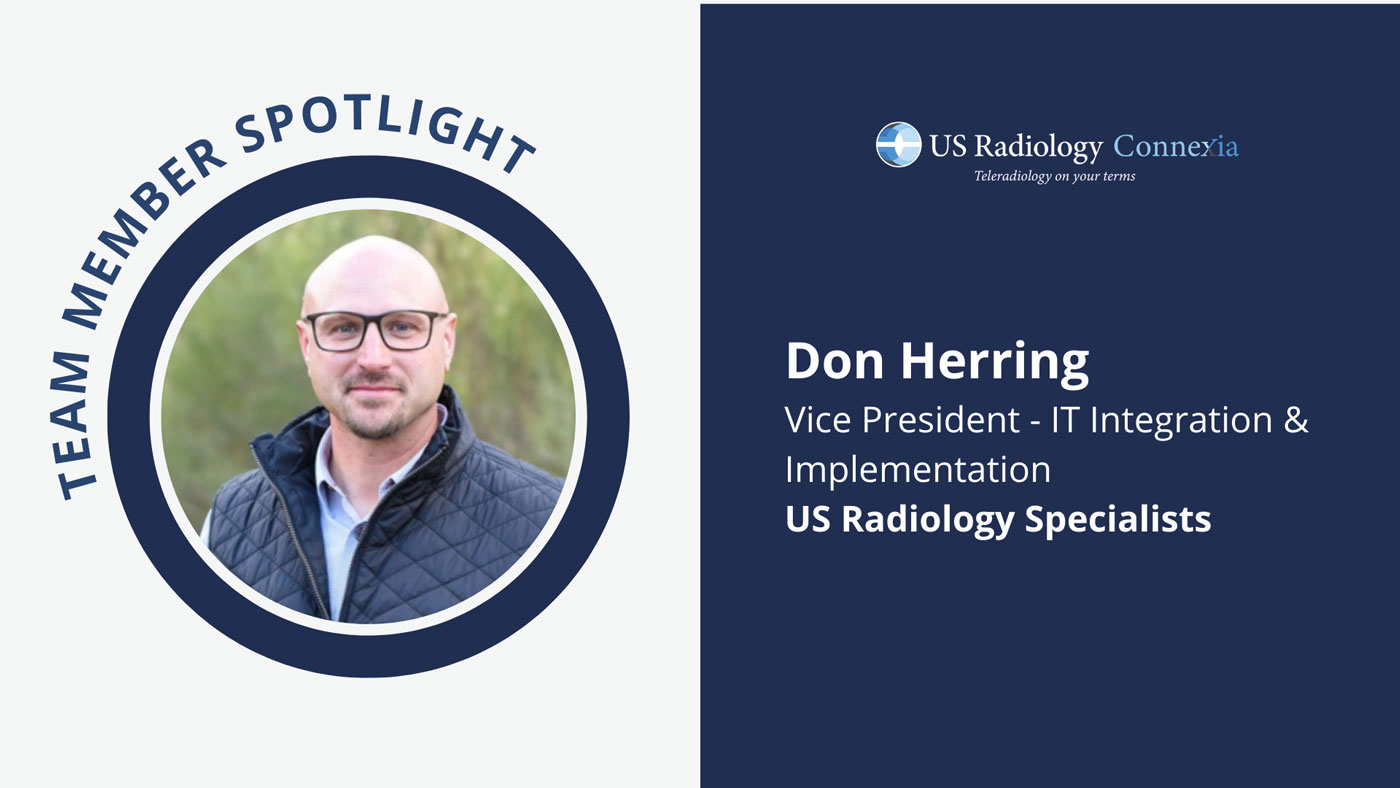June 17, 2025


Q: Tell us about your career journey so far. What brought you to US Radiology Specialists and Connexia?
My first job out of college was as a radiologist admin assistant at the Karmanos Cancer Center in Detroit. It was there that I was introduced to the true importance of radiology and how it impacts patients—from that point, radiology became my passion.
When Karmanos opened a new imaging center, I transitioned into a PACS administrator role, building on my early IT experience. That led to an opportunity at Ascension, where I started as the team lead for an IT radiology team. From there, I moved into a role focused on radiology systems implementation—and eventually became the lead for that team. It was a formative time that shaped how I think about building technology that truly supports radiologists.
Eventually, I relocated to Texas with Ascension to serve as Director of Operations, where I opened four imaging centers in the Austin area. While it was a valuable experience, I realized I missed the hands-on side of IT—the work that directly improves how radiologists do their jobs.
That’s what led me to US Radiology, where I now focus on enterprise integration and implementation, including work with Connexia.
Each step in my journey—from supporting radiologists as an admin assistant to leading large-scale technology initiatives—has shaped how I lead. I’ve seen the challenges from multiple angles, and that perspective helps me stay grounded in what really matters: building systems that make life easier for the people doing the work.
Q: What does a typical day at work look like for you supporting Connexia?
When it comes to Connexia, it’s about helping roll out and integrate systems that support how radiologists want to work—making sure those tools fit seamlessly into their workflow without disruption. For Connexia specifically, that includes PACS and dictation systems.
Right now, we’re rolling out a new dictation system—Rad AI—which will be integrated within their PACS. The goal is to help radiologists spend less time correcting reports and more time focusing on the images. Rad AI generates initial impressions automatically, so radiologists can really zero in on what matters most: finding issues on the scans.
Connexia is also exploring AI tools that can support efficiency and accuracy. Whenever they need something new and exciting, we’re there to support that effort from the technologies and solutions perspective. As Connexia is growing so quickly, there’s a lot of opportunity to work together.
Q: As a teleradiology practice, technology is especially critical. How do you see the role of IT supporting Connexia’s mission?
I don’t think you can overstate how essential IT is to a radiologist—especially in teleradiology. Technology is their stethoscope. It’s not just a tool; it’s at the core of how we deliver patient care. It enables us to efficiently read scans, make accurate diagnoses, and ensure patients get the care they need, wherever they are. For Connexia, that means IT isn’t just a support function—it’s the foundation that empowers our radiologists to do meaningful, impactful work.
Q: How do you see technology evolving to continue supporting healthcare, especially in teleradiology?
In the past, AI felt more like a promise than a practical tool—but that’s quickly changing. We’re seeing real value in both dictation AI, like Rad AI, and imaging AI that flags potential findings and supports radiologists as an intelligent assistant. With rising exam volumes and a shortage of radiologists, these tools are becoming essential to help us work more efficiently while maintaining high standards of care.
On the infrastructure side, we’ve moved to a hybrid model with data center hosting, which gives us a solid foundation today. But looking ahead, advancements in networking and AI-powered image prioritization are making it increasingly feasible to move fully to remote hosting. As these technologies mature, I see a future where large studies stream instantly, reducing local infrastructure needs and enabling a more scalable, efficient enterprise-wide model for teleradiology.
Q: When you’re not at work, where can we find you?
When I’m not working, I truly cherish time with my family. My wife, Jennie, and I have three amazing kids: Carter, Victoria, and Easton. We love cruising together; it's one of the few times I can fully disconnect from work, recharge my battery, and focus entirely on the people I love most.